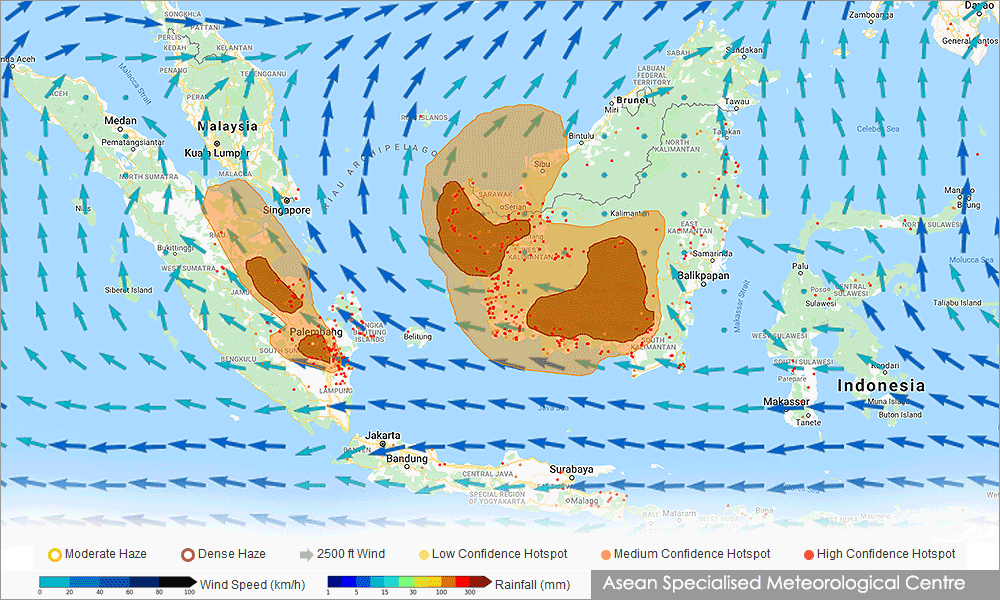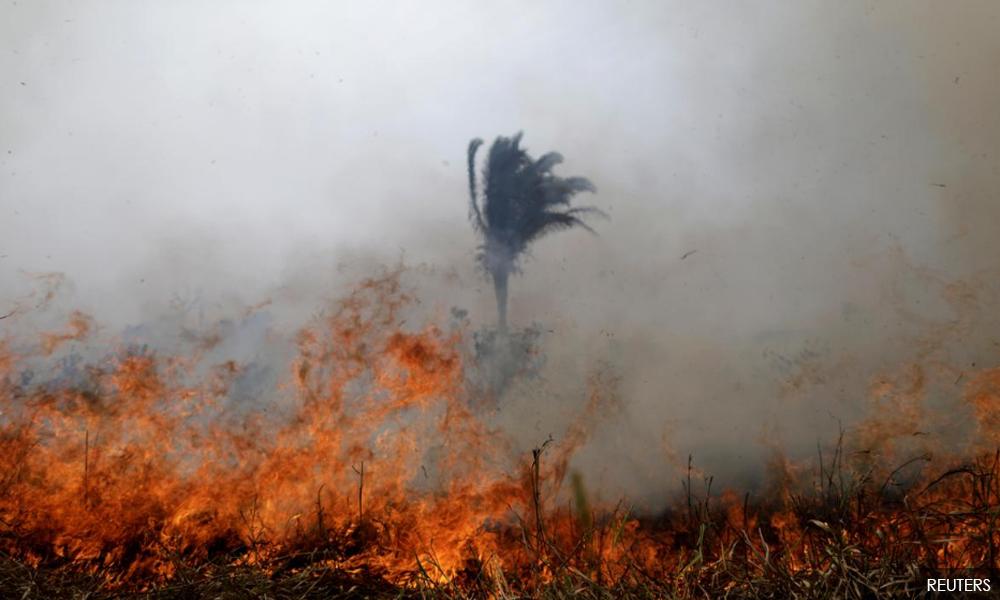The Air Pollution Index (API) reading in several areas of Sarawak continues to record unsafe readings with Sri Aman near Kuching hitting the hazardous level.
According to the Environment Department API’s readings as at 10pm today, the API reading for Sri Aman was at 396, having climbed steadily from a reading of 201 at 10pm last night.
Meanwhile, Kuching recorded very unhealthy API readings at 210 while ILP Miri (103), Samalaju (102), Bintulu (120), Mukah (132), Sibu (167), Sarikei (156) and Samarahan (210) recorded unhealthy or very unhealthy air levels.
Three areas in Peninsular Malaysia recorded very unhealthy air quality. They are Johan Setia Klang in Selangor (232), Nilai (205) in Negeri Sembilan and Seri Manjung (223) in Perak.
An API of 0-50 represents good air quality, 51-100 is moderate, 101-200 is unhealthy, 201-300 is very unhealthy, while 300 and above is hazardous.
According to Bernama, the National Haze Action Plan stipulates that schools are to cease outdoor activities if the API raises above 101.
If the API breaches 151, cloud seeding operations would commence if weather permits, and the National Disaster Management Agency (Nadma) would propose the activation of central, state, and district disaster management committees.
Schools, kindergartens, and childcare centres would be ordered closed immediately if the API reaches above 201, and a “haze emergency” would be declared if it reaches above 500.
Schools closed
For tomorrow, 115 schools in the districts of Sepang, Hulu Langat, Kuala Langat, Klang and Sabak Bernam in Selangor have been ordered closed due to haze, affecting 113,669 students.
However, schools in Putrajaya would reopen tomorrow as the API there has dropped below 200, and schools in Sepang, Hulu Langat and Petaling Perdana would also reopen due to improving air quality, said the Education Ministry.
As for today, over 600 private and public schools in Sarawak, Selangor, Putrajaya and Negeri Sembilan have been ordered closed.
The Education Ministry, in a separate statement, said 636 public schools and 12 private schools nationwide were ordered closed today, affecting 445,249 and 7,432 students respectively.
Of the public schools, 298 were ordered closed in Sarawak, 201 in Selangor, 25 in Putrajaya and 112 in Negeri Sembilan.
Meanwhile, five private schools in Selangor, four in Kuala Lumpur, two in Putrajaya and one in Negeri Sembilan were closed today.
The ministry had earlier uploaded onto social media a list affected schools in Selangor and Negeri Sembilan that will be closed today:
In a separate statement, the Negeri Sembilan Education Department said all schools in Port Dickson will be closed today.
Nadma said that cloud seeding activities would take place in Sarawak on Sept 19, should weather conditions permit.
"A state of haze emergency will only be declared when the API readings exceed 500," it said. The last an emergency was declared was in June, 2013, in Muar and Ledang.

Persistent hotspots
According to the Asean Specialised Meteorological Centre (ASMC), “persistent hotspots” have been detected in Sumatra and Kalimantan in Indonesia, with “moderate to dense smoke” in the past few weeks.
As of today, there were 390 hotspots in Kalimantan and 139 in Sumatra, 17 in Sarawak and one in Peninsular Malaysia.
“Smoke haze continued to build up in the provinces of Riau, Jambi and South Sumatra as a result of moderate to dense smoke haze from the persistent hotspots there. In particular, there has been an intensification of hotspots in Jambi that led to increased haziness there.
“Some of the smoke haze from the hotspots in Sumatra has been blown to the western parts of Peninsular Malaysia and Singapore. In Kalimantan, widespread moderate to dense smoke haze from persistent hotspots in South, West, and Central Kalimantan was observed,” ASMC stated on its website.

The smoke emanating from these hotspots is believed to be from forest fires and is largely blamed for transboundary haze blanketing Malaysia.
ASMC’s tracking has shown that the haze in Peninsular Malaysia is coming from Sumatra while the haze in Sabah and Sarawak is coming from Kalimantan.
It stated hotspot activities is expected to persist due to "drier-than-usual" and warmer conditions forecast from Sept 16 to Sept 30.
"Depending on the prevailing winds and the extent of the smoke haze there, further occurrences of transboundary haze can be expected," the ASMC warned.

